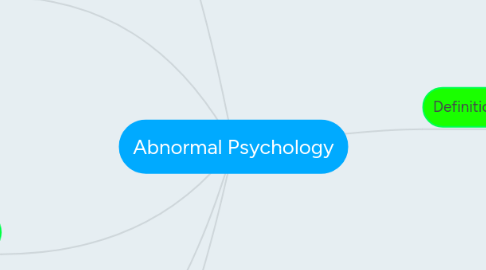
1. Two classification systems that help in Diagnoses
1.1. 1) ICD- WHO
1.2. 2) DSM V- APA
2. How is a diagnosis reliable?
2.1. those using it must consistently make the same diagnoses. So, two or more psychologists have to agree
2.2. A major way of assessing reliability of psychiatric diagnosis is by inter-rater reliability, which is by assessing the agreement with which different clinicians diagnose conditions in the same patients.
3. How is a diagnosis Valid?
3.1. the diagnoses must identify a real pattern of symptoms and therefore apply appropriate treatment
3.2. Biases that effect Validity
3.2.1. Racial
3.2.2. Confirmation
3.2.3. Reporting
4. Ethical Considerations
4.1. Labelling Theory
4.1.1. Labeling theory as shown by Caetano and Rosehan indicates that one a diagnosis has been made, it tends to stick and as a result there are significant negative effects of such diagnosis on a person’s subsequent treatment by other people
4.2. Self Fulfilling Prophecy
4.2.1. Patients may begin to act as they think they are expected to act,
4.3. stigmatization
4.3.1. when a negative label is attached to someone, and as a result they may receive prejudice from society.
4.4. institutionalization
4.4.1. This when patients are so used to being cared for and not doing anything themselves they can’t function independently in the outside world.
5. Cultural Considerations
5.1. Culture Bound Syndromes
5.1.1. Culture bound syndromes (CBS) refers to syndromes that do not fit easily into the categories and classifications of supposedly universal disorders. CBS occurs almost exclusively in specific locations or populations and are indigenously regarded to be illness or afflictions and have local names.
5.1.2. Cultural Blindness
5.1.2.1. Problem od identifying symptoms of a disorder if they are not the norm in the clinicians own culture
6. Definitions can be based on
6.1. 1)
6.1.1. Statistical Infrequency defines abnormality as deviation from the statistical norm meaning infrequently occurring behavior.
6.1.2. 2)
6.1.2.1. Deviation from social norms defines abnormality as behavior which departs from what is acceptable in a particular society
6.1.2.1.1. BUT: Through this approach abnormal behavior can never have a universal meaning as judgments will vary from society to society.
6.1.3. 3)
6.1.3.1. Dysfunctional behavior defines abnormality as psychological distress or discomfort that causes a person to not be able to function properly
6.1.3.1.1. BUT: Some of the criteria depends on subjective judgments of other people. For example observer discomfort may vary depending on the particular person doing the observing. Violation of moral standards also involves subjectivity in judgement, who moral standards are we using as the standard, it may different for each person.
6.1.4. 4)
6.1.4.1. Deviation from ideal mental health defines abnormality as behavior which departs from that which is considered ideal
6.1.4.1.1. BUT:What is the ideal standard? This criteria becomes a value judgement, different cultures have different ideas on what is considered ideal. For example, in collectivistic cultures working together is valued and ideal but in individualistic

